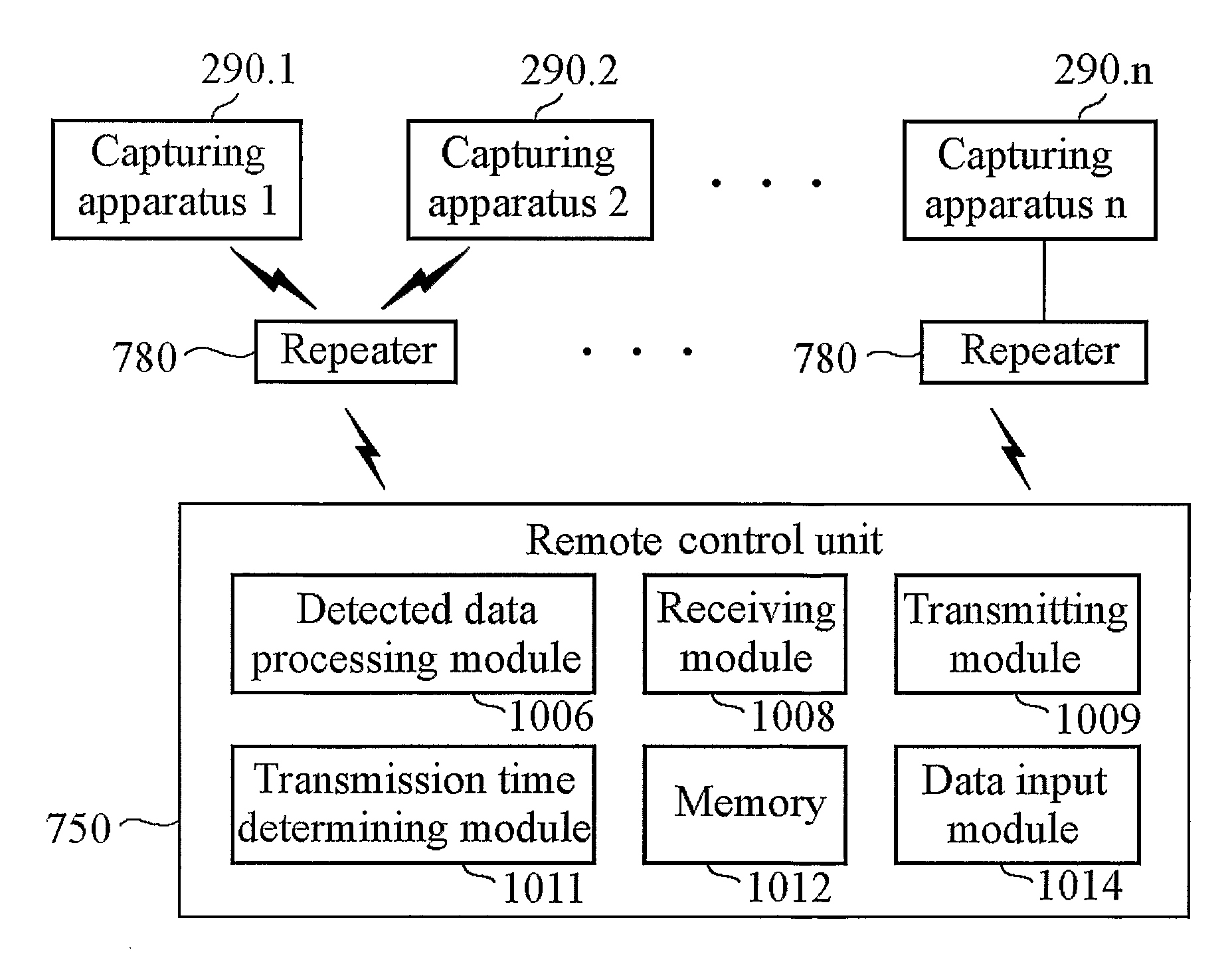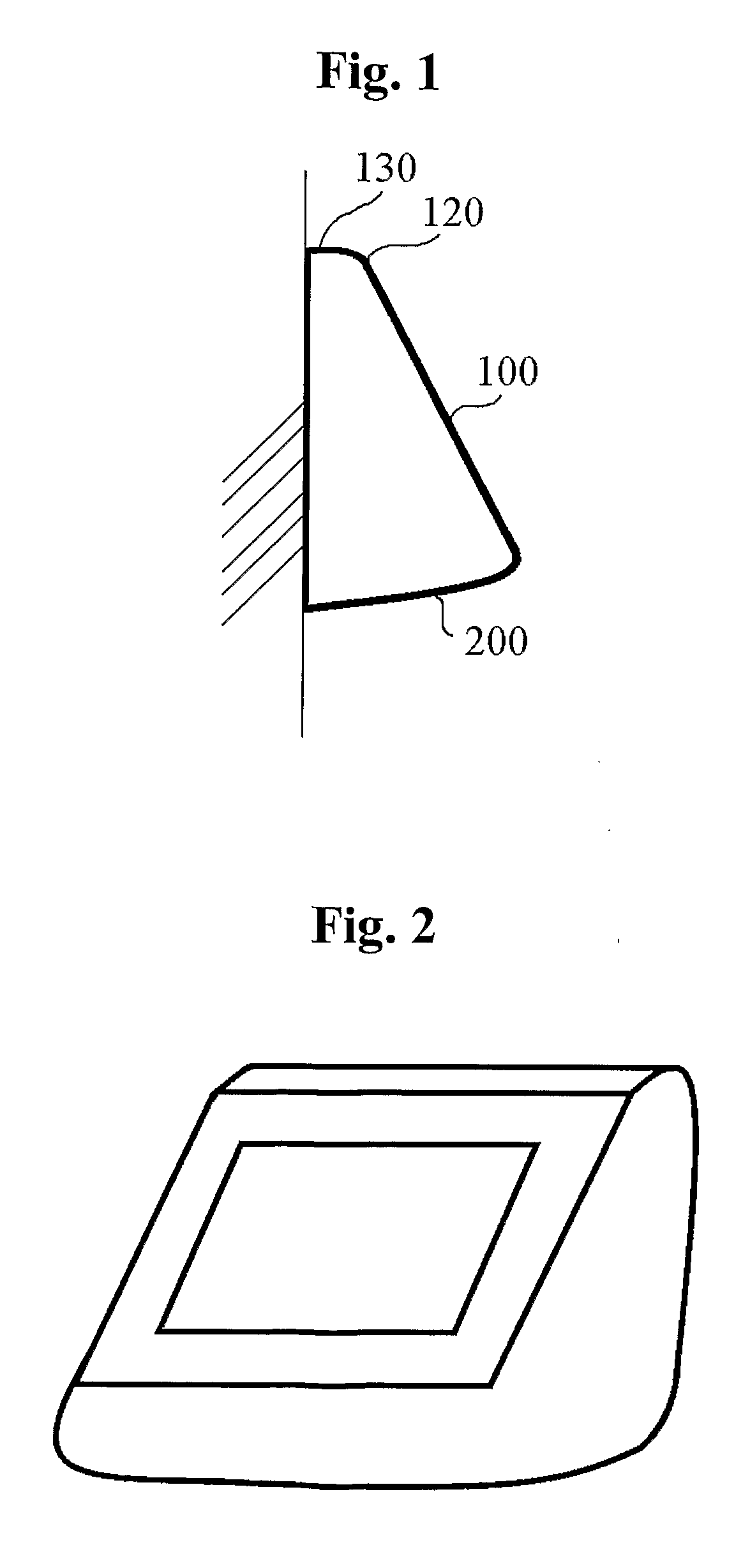Flying insect capture and monitoring system
a monitoring system and flying insect technology, applied in the field of capturing apparatuses for flying insects, can solve the problems of generating undesirable noises, affecting the safety of insects, and killing insects with electricity
- Summary
- Abstract
- Description
- Claims
- Application Information
AI Technical Summary
Benefits of technology
Problems solved by technology
Method used
Image
Examples
first embodiment
[0069]FIG. 9 is a schematic diagram conceptually illustrating the remote monitoring system for insect control according to the present invention.
[0070] As illustrated therein, the remote monitoring system for insect control according to the embodiment of the invention includes the remote control unit 750, which is installed in a monitored subject site such as a building 710, 720 and 730, to keep a watch on the activities of insects and to collect data on them. It then transmits the previously collected data through a wireless network 760 or wired network 770 such as Internet or general telephone lines. The remote monitoring system also includes the central control unit 740, which analyzes and manages the transmitted data. The monitored subject site means a building where insects appears or is likely to appear, or any other predetermined spaces (e.g., public parks, places for loading freights, etc.), or an outer area of the building or the predetermined space.
[0071] The remote contr...
second embodiment
[0142]FIG. 21 is a diagram chart conceptually showing the remote monitoring system for insect control according to the
[0143] The difference between the first and second embodiments of the remote monitoring system of the present invention is that the central control unit 740 re-transmits the analysis result of the insect-related information to users of each building 710, 720 and 730 and / or to the service technician. More specifically, the service technician receives the analysis result of the insect-related information by using mobile communication terminal 70, such as a personal digital assistant (PDA) or a mobile phone, and performs insect control operation that is suitable for each monitored subject site.
[0144]FIG. 22 is a block diagram showing the central control unit 740 according to the second embodiment of the present invention.
[0145] The second embodiment comprises a receiving module 900 and a transmitting module 910 instead of the communication module of the first embodime...
third embodiment
[0149]FIG. 23 is a block diagram conceptually showing the remote monitoring system.
[0150] The difference between the second and third embodiments of the present invention is that insect-related information may be directly transmitted from remote control unit 750 to mobile communication terminal 70 in the third embodiment. Although mobile communication terminal 70 shown in FIG. 23 communicates with remote control unit 750 by wireless communication, mobile communication terminal 70 can also be configured to communicate with the remote control unit 750 via both wired and wireless communications. In the third embodiment of the present invention, the service technician may receive an instruction to move to a subject site from the remote control unit 750, which is installed at the site, or from the central control unit 740. He / she can also receive insect-related information from both.
[0151]FIG. 24 is a block diagram conceptually showing the remote control unit 750 according to the third ...
PUM
 Login to View More
Login to View More Abstract
Description
Claims
Application Information
 Login to View More
Login to View More - R&D
- Intellectual Property
- Life Sciences
- Materials
- Tech Scout
- Unparalleled Data Quality
- Higher Quality Content
- 60% Fewer Hallucinations
Browse by: Latest US Patents, China's latest patents, Technical Efficacy Thesaurus, Application Domain, Technology Topic, Popular Technical Reports.
© 2025 PatSnap. All rights reserved.Legal|Privacy policy|Modern Slavery Act Transparency Statement|Sitemap|About US| Contact US: help@patsnap.com



